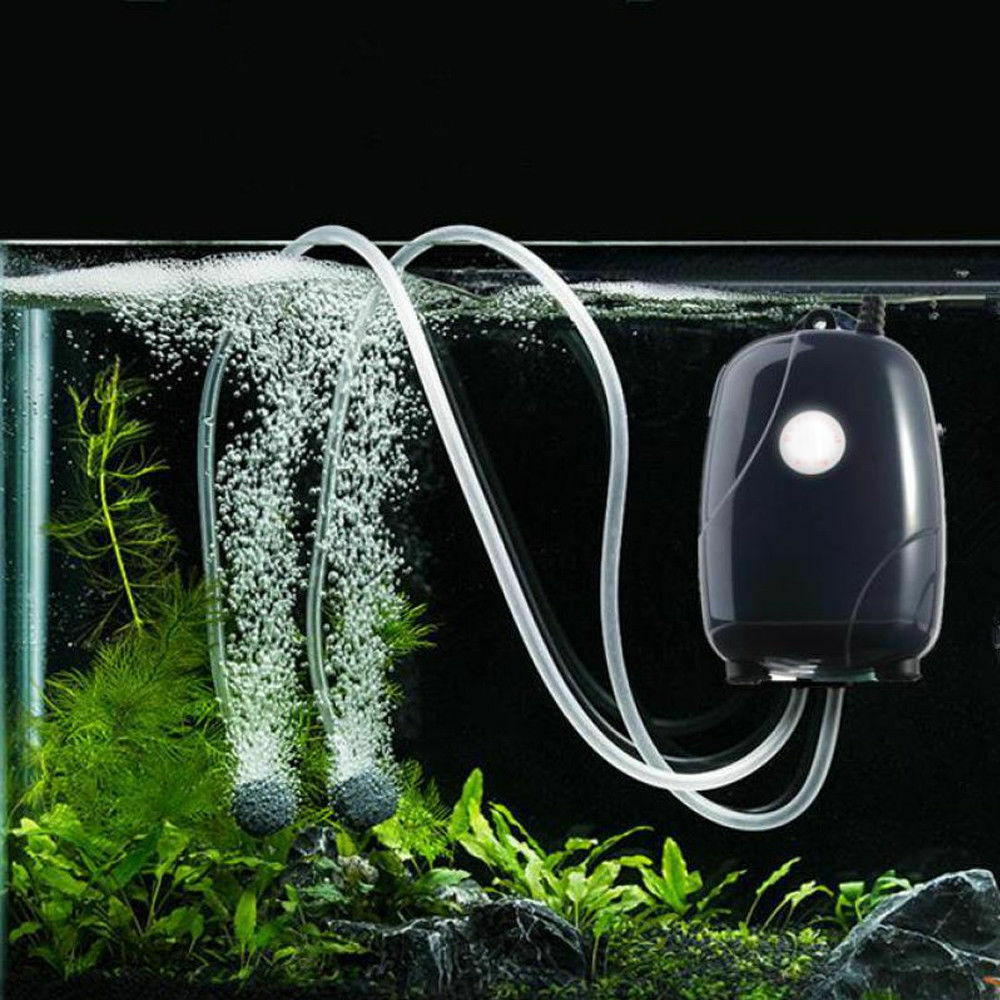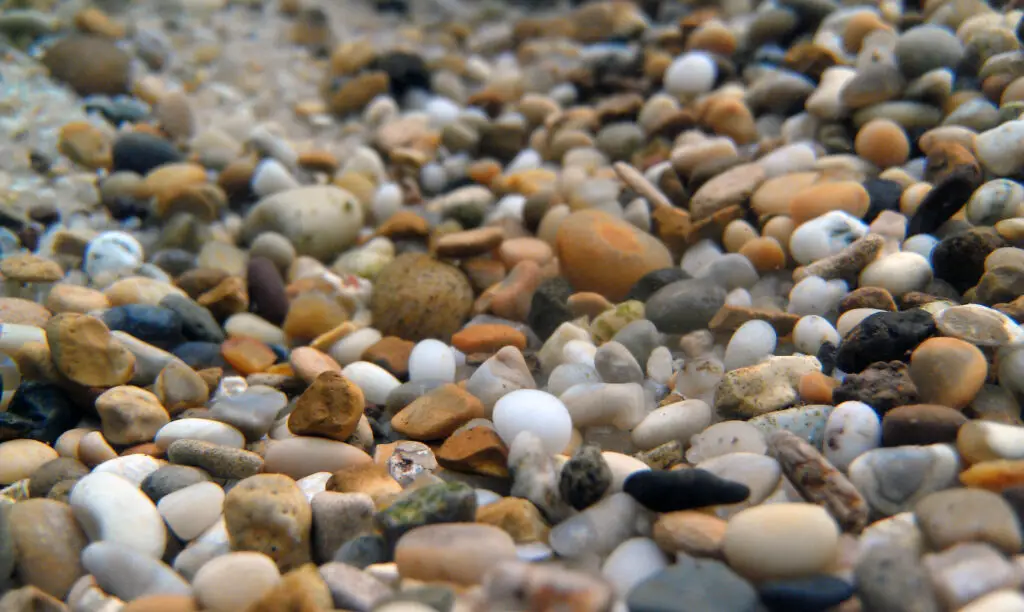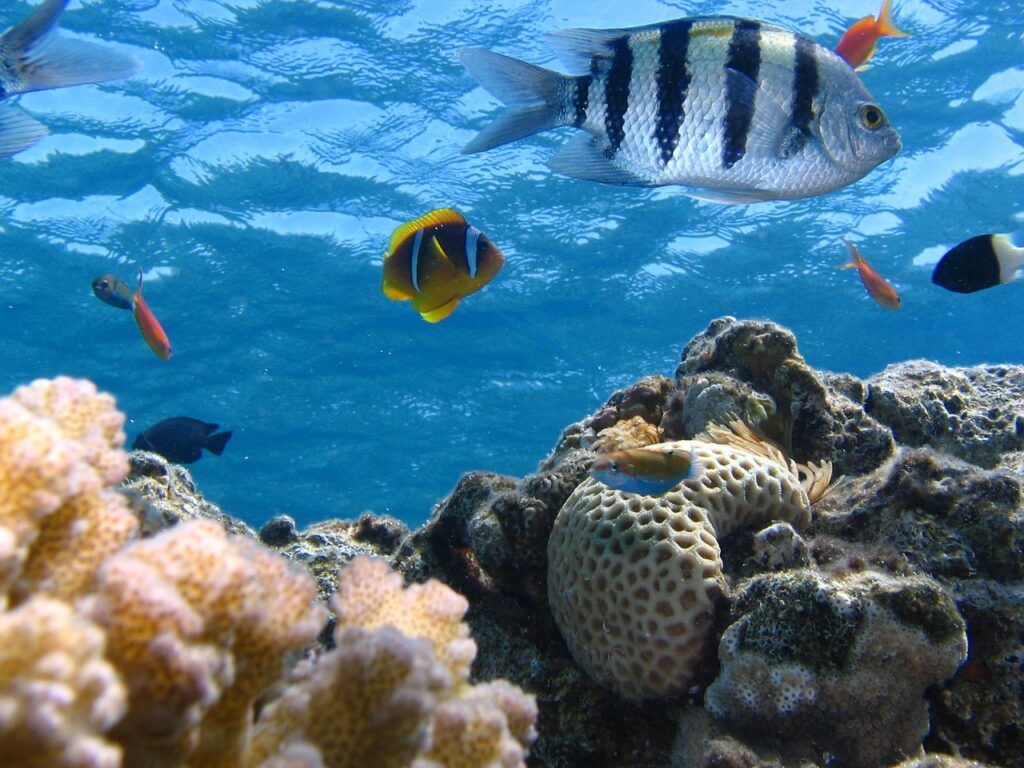Air pumps are a simple, yet very effective piece of aquarium equipment. They displace the water in the aquarium, preventing stagnation. They pull air from outside the tank and pump them into the tank, creating bubbles when they are released into the water. The bubbles then stir the water, which sends the carbon dioxide to the surface.
This enables the carbon dioxide to be released back into the air outside, while the oxygen stays in the tank for the fish to breathe via their gills. This also creates displacement, which again, prevents stagnation.
The pump itself stays outside the water so it can pull air from outside the tank. Then a hose gets dropped into the tank. It will likely have some attachment at the end that optimizes the dispersal of the air into the water.
This is called the air stone, which is a porous stone that will not harm the fish, but enable the air to pass through it into the water.
Larger air stones are sometimes referred to as bubble bars. This is because the porous stone is in the shape of a long bar, with specific holes in it to allow the bubbles to be aimed in a specific direction. Bubble bars are useful in tanks larger than 10 gallons, allowing for multiple streams of displacement.
Different Types of Pumps
Air pumps are a type of aquarium pump like water pumps and powerheads. For efficiency’s sake, some manufacturers have combined them with filtration systems. For smaller tanks, however, the air pump and the filtration system are usually two separate units.
Smaller air pumps designed for tanks smaller than 50 gallons will displace the air, but they will not provide all the necessary circulation the tank requires. Tanks larger than 50 gallons probably require a water pump to circulate the water or a powerhead to create a current.
Be sure to choose the type of air pump you’ll need for the size of aquarium you have or plan to have.
Air pumps are best for keeping a tank aerated when you have fish that do not want a lot of currents or excessive circulation. Or, in scenarios where you need specialized filtration such as with frogs or crabs. Air pumps are not ideal for saltwater tanks, as those usually require a powerhead.
Parts of an Air Pump
- Pump: this sits outside the tank, or connects to the siding of the tank. It pulls the atmospheric air into the tubing.
- Airline tubing: usually clear plastic so it blends in with the tank. It connects the pump to the air stones or bubble bars.
- Air stone or bubble bar: porous stone that directs the air into the tank.
- Check valve: the valve keeps everything moving one direction, preventing a backwards siphon.
- Gang valve: this is necessary if you wish to attach more than one air stone or bubble bar because it will allow you to have multiple outlets for airline tubing.
Does an Air Pump Increase the Oxygen in a Fish Tank
Air pumps absolutely increase the oxygen in a Fish Tank. Ordinarily, carbon dioxide would sink to the bottom of the tank. However, with the air pump putting fresh air into the tank and displacing what would be stagnant water filled with carbon dioxide, oxygen is newly put into the water.
Where Should the Air Pump Be in a Fish Tank
The air stone gets placed at the bottom of the tank for optimum effectiveness. The bubbles must be entering the tank at the bottom so that the carbon dioxide will rise with the bubbles and the oxygen will exchange into the water. Given their propensity to float to the top, they should be anchored to the substrate via rocks or plant clips.
The pump itself should be on a flat surface outside of the tank, preferably below the tank or at least level with the bottom of it. This reduces the risk of backwards siphon beyond the usage of a check valve and minimizes the rattling the pump will make. Some pumps are just loud however, and may need some sort of silencing barrier.
How Long Should You Run an Air Pump in a Fish Tank
Air pumps should be running constantly, especially in larger tanks. Without an air pump, the only oxygen entering the water is from any surface agitation. Without any pumps, all filtration and water movement ceases, meaning there is little to no gas exchange.
This means that once the fish use up all the available oxygen, they will drown without more being added. Not all species can come up to the top for new oxygen.
Is an Air Pump Required for an Aquarium
Ideally you should have something that is providing some water displacement and introducing new oxygen back into the tank. An individual air pump may not be necessary if you have a filtration system that also aerates the water, or you have a saltwater tank with a powerhead providing currents and circulation.
Another instance where you won’t want an air pump is if you have living plants in the tank. The plants utilize the carbon dioxide settling at the bottom of the tank and turn it into oxygen via photosynthesis, rendering the need for an air pump unnecessary. In fact, the air pump may be too effective at removing the carbon dioxide, causing your plants to die.
Most of this depends on the type of tank you wish to have. On average, a freshwater tank between 10 and 50 gallons with no live plants and fish that do not like strong currents should have an air pump or an aerator attached to the filtration system.
If you do choose to have an air pump, be sure to get one that is rated for the size of your tank or larger. And with tanks bigger than 75 gallons, opt to use more than one air pump if this is your only means of aeration.
In short, air pumps are an excellent and relatively inexpensive way to aerate the tank.



